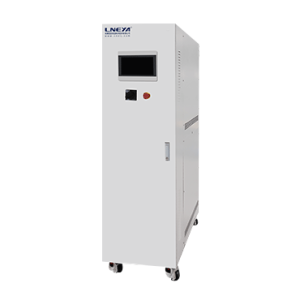Why Are Low-Temperature Chillers More Expensive
When shopping for a cooling system, you might notice a strange phenomenon: low-temperature chillers are always significantly more expensive than ambient temperature units. Is this simply due to arbitrary pricing by the vendor? The real cost difference lies in the equipment’s design details, material standards, and low-temperature technology. This article will help you understand the technical reasons for the high cost of low-temperature chillers.
What is a low-temperature chiller?
The outlet water temperature of ambient temperature chillers generally ranges from 5°C to 25°C, while that of low-temperature chillers can drop as low as -40°C. Some high-performance models can reach temperatures as low as -80°C or even -150°C. These low-temperature devices are primarily used in the pharmaceutical, chemical, and laboratory low-temperature testing industries.
Achieving low outlet water temperatures is a technical challenge. To ensure the equipment operates properly at temperatures exceeding several tens of degrees Celsius, its materials, structure, and refrigeration circuits face challenges that ambient temperature equipment cannot handle.

Why are low-temperature chillers more expensive?
What design differences do low-temperature chillers employ compared to ambient temperature chillers that contribute to their higher cost?
Special Compressor Design
Low-temperature operating conditions place even higher demands on compressor performance, as they must operate stably and long-term under low suction pressures and low temperatures. Conventional compressors experience lubrication failure and a sharp drop in efficiency at temperatures below -40°C.
Low-temperature chillers, however, are mostly internationally renowned compressor brands and feature specialized low-temperature designs. To prevent the lubricating oil from freezing, the crankcases are heated.
Furthermore, these compressor components are made of special alloys and feature high-precision bearings and seals, making them less susceptible to brittle cracking at low temperatures. However, these components are inherently expensive, and some chiller manufacturers import them from international markets, further increasing the overall price of the unit.
Complex Refrigeration System
Conventional chillers require only a single stage of compression to cool water to 5°C to 10°C. Low-temperature chillers, however, must reduce temperatures to -80°C or even lower. To avoid the safety risks associated with excessive compression ratios, multi-stage compression or cascade refrigeration technology is required.
Multi-stage compression uses multiple compressors to reduce the temperature in stages, with each compressor responsible for compressing the refrigerant to a specific temperature range to avoid excessive compression ratios. Cascade refrigeration connects two refrigeration systems in series, with the cooling capacity generated by the first system used to cool the condenser of the second.
This technology can reduce the outlet water temperature to ultra-low temperatures (below -80°C). Both of these refrigeration system designs require more components, such as compressors, heat exchangers, and expansion valves, and are more difficult to manufacture.
Higher Insulation Standards and Freeze Protection
Low-temperature chillers’ piping, evaporators, and liquid storage tanks are exposed to low temperatures for extended periods. Poor insulation of these components not only reduces Kühlleistung but also leads to severe frost or even ice formation on their surfaces.
Therefore, chiller manufacturers use materials such as rubber-plastic insulation and polyurethane foam as insulation layers, and install heating tape in key locations. The increased use of insulation materials and process steps increases the cost of low-temperature equipment.
More Precision Control Systems
Low-temperature chillers operate at extremely low temperatures, requiring extremely high control precision for temperature, pressure, and flow. While conventional chillers may have a temperature control accuracy of ±0.5°C, low-temperature chillers often require ±0.1°C or even ±0.01°C.
This is only possible with equipment equipped with high-precision sensors, PID algorithms, and programmable controllers. This control system not only has high hardware costs, but software development also requires significant time, naturally resulting in a higher overall system price.
More Safety Devices
Low-temperature environments pose significantly greater risks to equipment operation than normal temperatures. Therefore, low-temperature chillers are equipped with more comprehensive and sensitive safety features, such as high and low pressure protection, refrigerant leak detection, antifreeze protection, and oil temperature and pressure protection.
While these protections may not be used regularly, they can prevent expensive repairs and production downtime in the event of an anomaly, contributing significantly to the high cost of low-temperature chillers.
Low temperature chiller brings better user experience
The higher price of low-temperature chillers comes at the expense of more stable temperature control, faster cooling rates, and more reliable safety features. Low-temperature chillers are an excellent choice for equipment and processes requiring precise temperature control.
If you’re considering a chiller system for a new project, LNEYA is happy to provide you with professional low-temperature cooling solutions. From selection to installation, LNEYA can help you address various temperature control challenges in both testing and production.
Contact us today to discuss your cooling needs.

- Temperature Control in Photolithography
- Is a Used Chiller a Good Idea
- Chiller Components and Refrigeration Fundamentals Guides
- Chiller Types and Selection Guides
- Dezember 2025
- November 2025
- Oktober 2025
- September 2025
- August 2025
- Juli 2025
- Juni 2025
- Mai 2025
- März 2025
- Februar 2025
- Januar 2025
- Dezember 2024
- November 2024
- Oktober 2024
- September 2024
- August 2024
- Juli 2024
- Juni 2024
- Mai 2024
- April 2024
- März 2024
- Februar 2024
- September 2023
- Juli 2023
- Juni 2023
- Mai 2023
- Januar 2023
luftgekühlte Kältemaschine Kühler Installation der Kältemaschine Wartung von Kühlanlagen chiller refrigerant Kältemaschinen Kalte Montage Gefrierschrank Kaltwassersatz Kühl-Heizsystem cooling system dynamisches Temperaturkontrollsystem energieeffizienter Chiller explosionsgeschützter Kühler Gefrierschrank Heizungsumwälzpumpe Industriekühler Industriekälteanlagen Industriekühlung industrieller Gefrierschrank Industriekühlschrank Mantelreaktor Laborkühlschrank Niedertemperaturkühler Nachrichten Ölkühler Prozesskühler process cooling Reaktorkühler Reaktorkühlung Reaktorkühlung Heizung Reaktorheizung Kühlung Kältethermostat Schneckenkühler Halbleiter-Kühlgerät Halbleiter-Testkühler sundi tcu Temperaturkontrolle Prüfkammer Thermostat Ultra-Niedertemperatur-Kühler Fahrzeug-Test-Kühler Kaltwassersatz wassergekühlte Kältemaschine
Verwandte Kühlgeräte
KONTAKT US
TEL:
EMAIL:
WeChat & WhatsApp:

Wechat QR

Haben Sie eine Frage oder benötigen Sie ein Angebot? Füllen Sie das untenstehende Formular aus, und unser Team wird sich innerhalb von 24 Stunden bei Ihnen melden.
 LNEYA Industriekühler Hersteller Lieferant
LNEYA Industriekühler Hersteller Lieferant
















